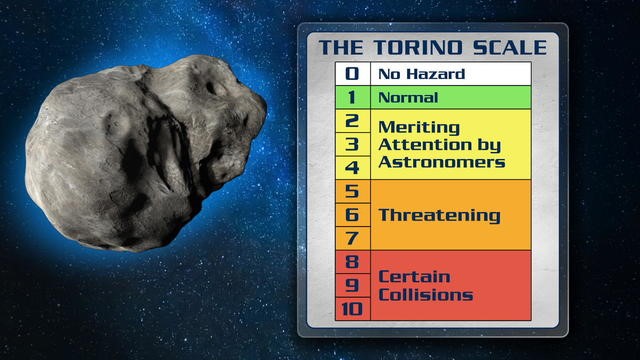7667766266
enquiry@shankarias.in
National Aeronautics and Space Administration (NASA) officials said that 2024 YR4 has slightly more than 1% chance of crashing into Earth in 2032.
Apophis asteroid, which was discovered in 2004, was initially rated 4 on the scale but was later downgraded as observations showed that it posed no threat for at least 100 years.
Torino Scale
